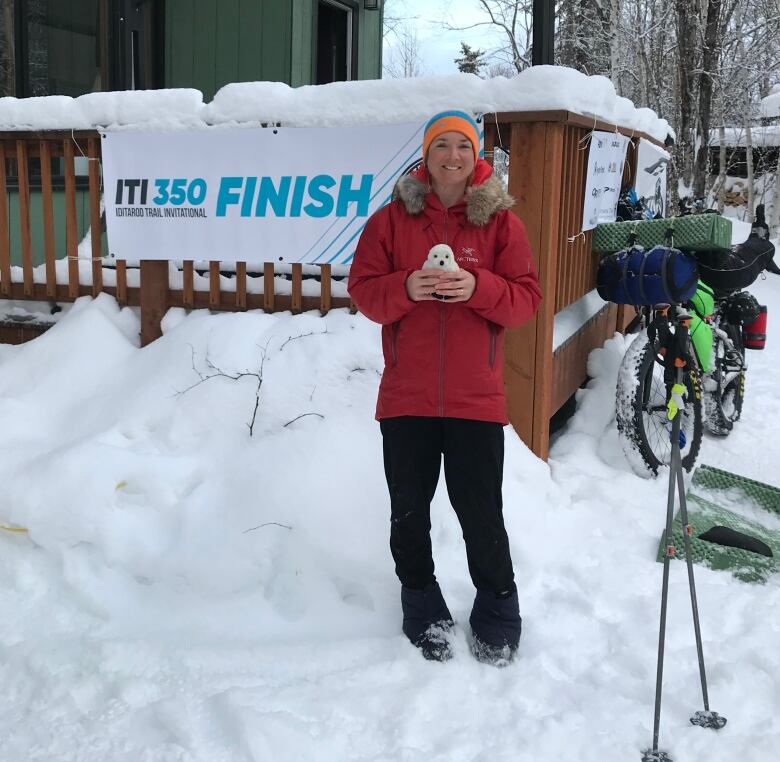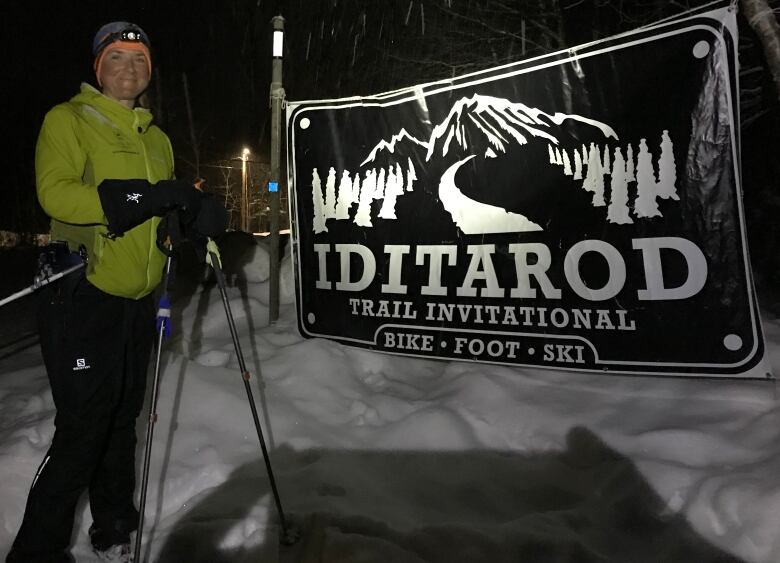With a time of 7 days, B.C. woman wins 350-mile category of Alaskan Iditarod Trail race
Jessie Thomson-Gladish now eligible for 1,000-mile category

After seven days, 11 hours and 20 minutes, Jessie Thomson-Gladishcrossed the finish line of one of the world's longest winter ultra-marathons this week, coming first in her category.
Having negotiated ice, snow and extreme cold, theKamloops, B.C., resident won the 350-mile (560-kilometre) women's foot race of the Iditarod Trail Invitational in Alaska, which started on Feb. 26.
The Iditarod Trail Invitation, not to be confused with the popular dog-sled Iditarod, began in 2000. Only 70 people from around the world are invited to compete each year.
"It's a bit surreal actually," she told Daybreak Kamloops host Shelley Joyce.
"Ultimately, it's a physical and mental challenge that takes me through the wilderness and sort of brings everything down to a survival, simplistic mode.
"I really, really enjoy it, and it's absolutely beautiful to be walking through the wilderness like that."

At 32, Thomson-Gladish has competed in several ultra-marathons, winning her category in the 2017 Yukon Arctic Ultra and competing as the only woman in the same race in 2015,and she plans to do more.
She said she wanted to compete in the 350-mile racebecause finishing it is a prerequisite to taking part in the 1,000-mile (1,610-kilometre) category.
How does she do it?
For some, preparation for these kinds of races are intense, and can involvepulling tires andspending hours at the gym and on the trail.
But Thomson-Gladish says her training regime is "relatively mild."
"I do a lot of running, and then I also add in snowshoeing and cross-country skiing," she said.
"I approach these races more as an expedition," she said.
'Amazed at what our bodies can do'
For 560 kilometres the distance from Vancouver to Revelstoke, B.C. Thomson-Gladish pulledher pulk, a sled with all her equipment and supplies, through snow and ice in the Alaskan wilderness.
She only slept and ate when absolutely necessarybecause the clock keeps ticking even when racers stop moving.
"I'm continually amazed at what our bodies can do, or what my body can do in these extreme distances per day," she said. "A little bit of rest and some food and the next day you're good to go again."
Thomson-Gladishwould like to be able to do an ultra-marathon on her own, with no other racers around her, but said races make it safer for all competitors.
"There's a risk of going through ice, there's risk of falling in overflow [pockets of slush], there's exposure to extreme cold. It's as safe as it can be."

With files from Daybreak Kamloops












_(720p).jpg)


 OFFICIAL HD MUSIC VIDEO.jpg)
.jpg)



























































































